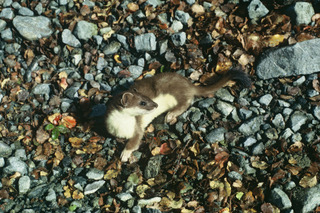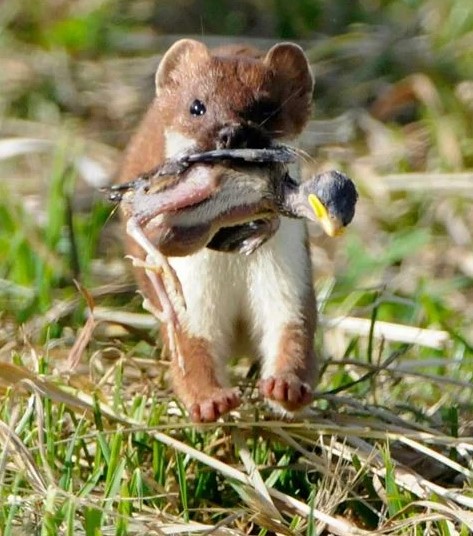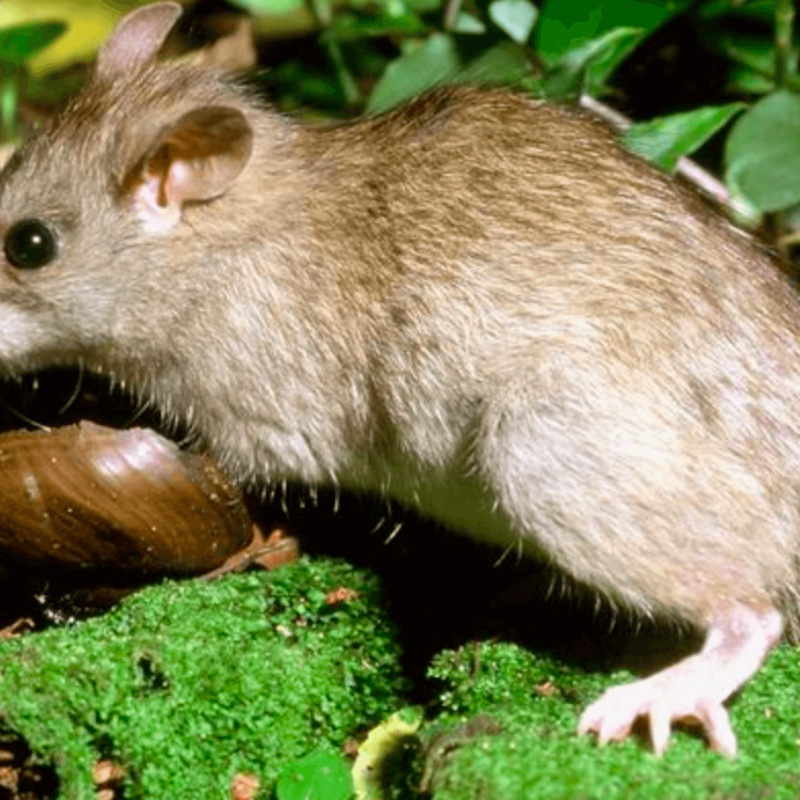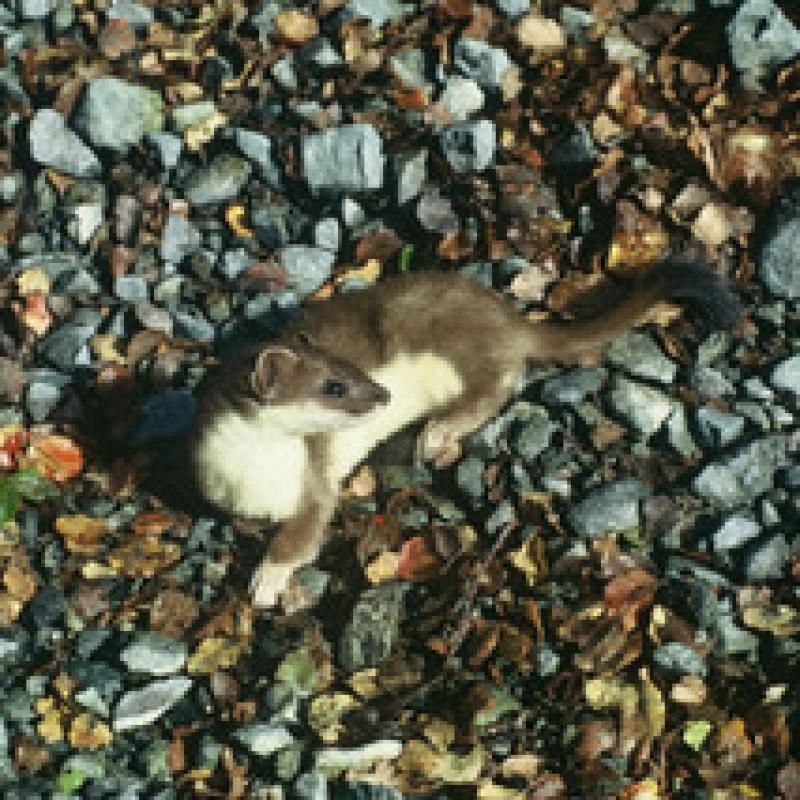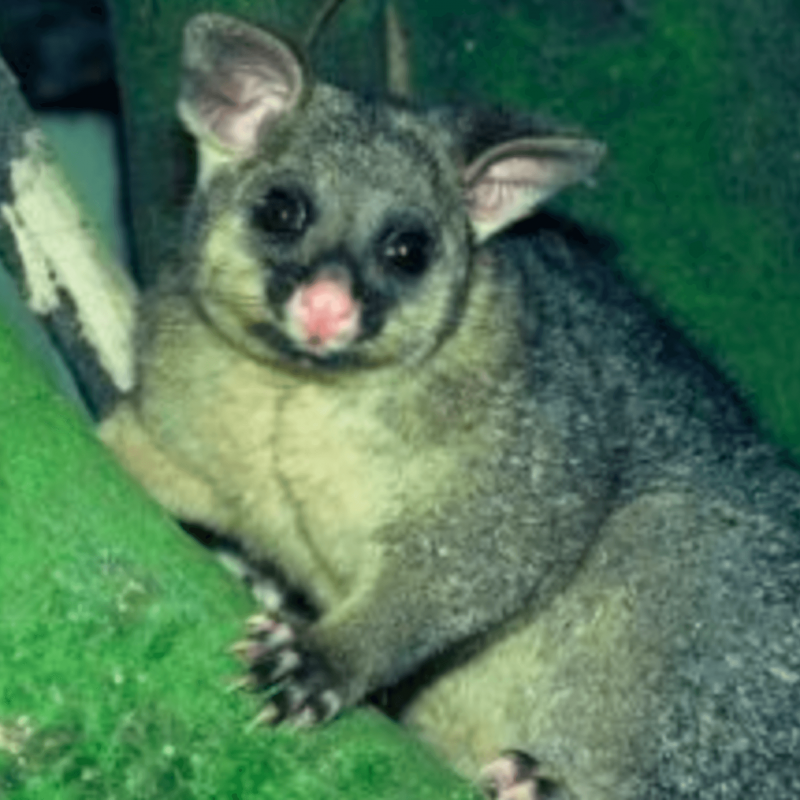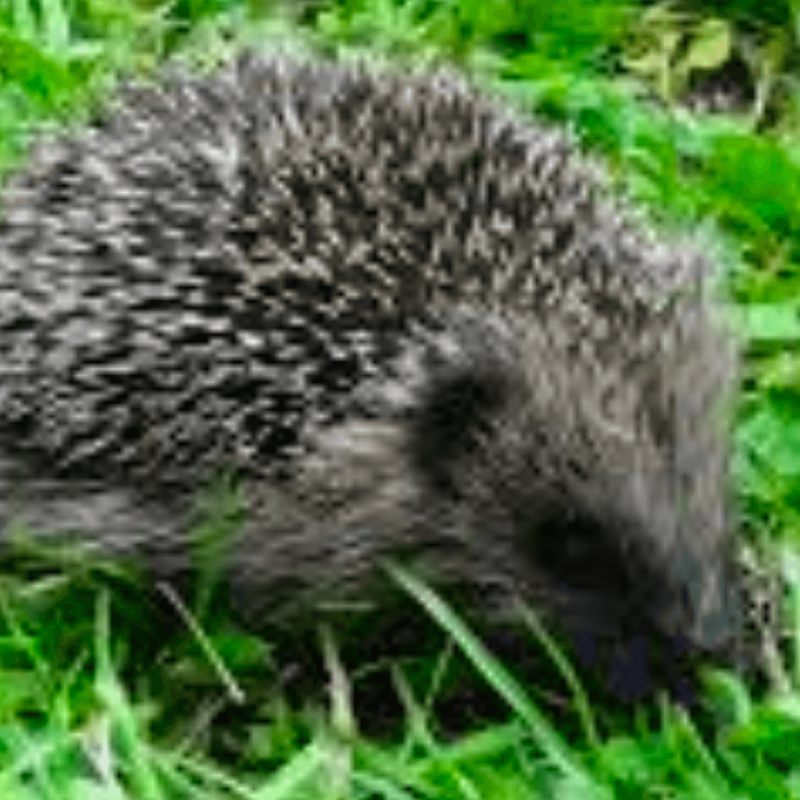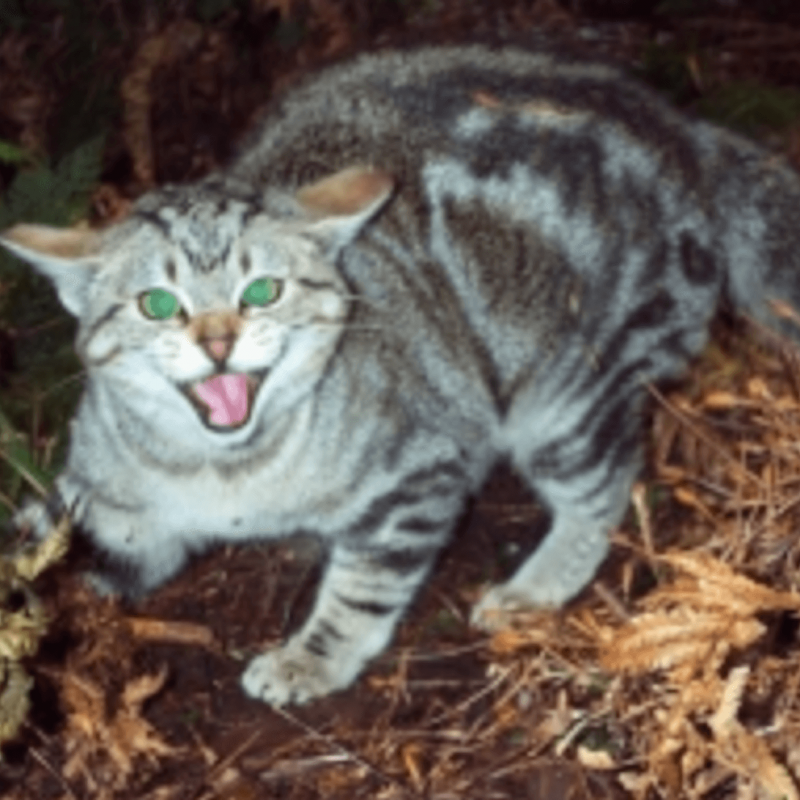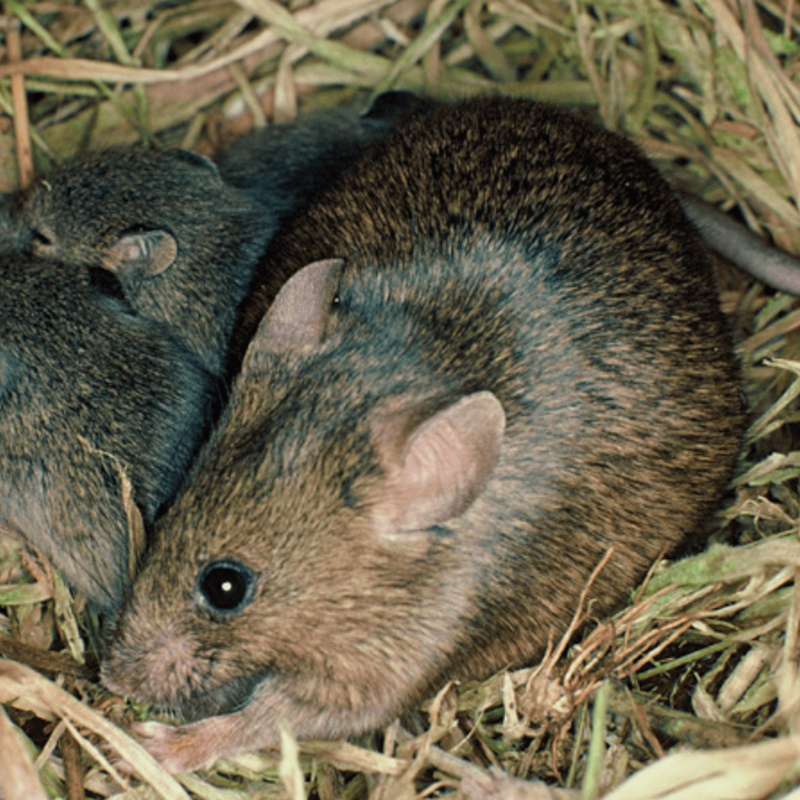Stoats are devastating for New Zealand birds. They are voracious and relentless hunters, said to have only two reasons for living – to eat and reproduce.
Stoats (Mustela erminea) are members of the mustelid family. Weasels and ferrets are also mustelids. All three species were introduced to New Zealand as early as 1879 to control rabbits that were destroying sheep pasture. From very early on, stoats have had a devastating effect on New Zealand’s unique birdlife.
A stoat has reddish-brown fur on its back, a white or cream coloured underbelly, and has a long tail relative to weasels, with a distinctive and obvious bushy black tip. An adult male can measure 390 mm from nose to tip of tail. Stoats can be confused with weasels but adult stoats are longer and heavier than adult weasels and display a straight line along their sides where the brown fur meets the pale belly fur.
They live in any habitat where they can find prey. In New Zealand, they are found anywhere from beaches to remote high country, at any altitude up to and beyond the tree-line, in any kind of forest – exotic or native, in scrub, dunes, tussock, and farm pastures.
Stoats are agile climbers, and hunt at any time, day or night. They can swim across water gaps of up to 1.5 km to reach islands and can reach land at a greater distance than it can swim by ‘rafting’ on floating material such as driftwood logs.
Den sites are well hidden and are taken over from other animals. They include holes in tree trunks and rabbit burrows. Stoats disperse freely and individual juveniles have been known to travel over 70 km in two weeks.
Stoats have had a significant effect on birds species such as wrybills, the New Zealand dotterel, black-fronted terns and young kiwi. Birds that nest in holes in tree trunks such as mohua, kākā and yellow-crowned kākāriki are easy prey for stoats who can take out eggs, chicks and incubating adults in one attack.
Stoats are implicated in the extinction of South Island subspecies of bush wren, laughing owl and New Zealand thrush. Even a 3 kg takahe or 2 kg kakapo can be killed by a stoat, that also has a strategy of killing everything in sight and storing the surplus for later.
Stoats and rats are part of a complex predator-prey relationship associated with beech tree seed production. In a periodic ‘mast event’ of beech trees – where high levels of seed production occurs – stoat populations explode assisted by the increased food supply. Later, when the seed supplies run out, the higher numbers of predators have an even greater effect on populations of birds, weta, bats and landsnails.
This video shows stoats eating rock wrens (external site) in the Upper Hollyford Valley, Fiordland. Every rock wren nest that DOC monitored that year failed, and predation by stoats was the primary cause.

